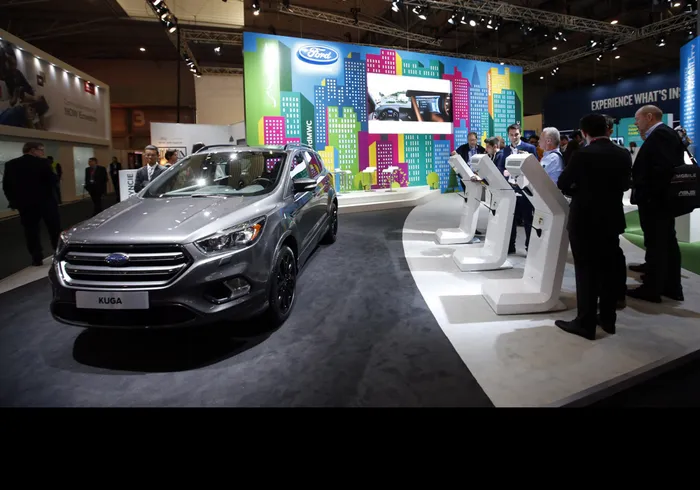Future Fords won’t forget about drivers

People touch devices at the Ford stand during the Mobile World Congress in Barcelona, Spain February 22, 2016. REUTERS/Albert Gea People touch devices at the Ford stand during the Mobile World Congress in Barcelona, Spain February 22, 2016. REUTERS/Albert Gea
Barcelona, Spain - Ford boss Mark Fields says the company is tripling its investment in new technologies that will ultimately lead to self-driving vehicles - but will still make cars for drivers who want to keep their hands on the wheel.
Fields said it was no coincidence that Ford chose the Mobile World Congress, a major technology trade show in Barcelona, to unveil its new Kuga SUV, which features its latest connectivity and driver-assisted technology.
“We are showcasing our development from an car company to a mobility company,” Fields said at Ford's stand, which stood out in a sea of smartphone and gadget makers. “This is a really good audience to reach some new folks.”
The Kuga includes the latest version of Ford's connectivity technology, Sync 3, with improved voice commands and easier access to apps on the driver's smartphone.
Fields said that over the next five years Ford’s investment would increase threefold in autonomous driving technologies, such as one-button parking assistance and guidance to keep a car in its lane and help braking in heavy traffic, with the ultimate goal of a fully autonomous car.
'Mobility’ is a buzzword at the show. For Ford customers, it means a wide range of innovations from further integration of the Internet in cars, to ride-sharing and even using other modes of transport in conjunction with cars, such as bicycles.
Fields said Ford was aware it would have to be careful to keep a hold on the traditional car driver - especially in the United States - by protecting the aura of personal freedom that carmakers have always cast over their products.
Ford was taking a “dual path” in developing the connected car, he said, one for those who want to be assisted by the car or eventually have the vehicle take over, and another for drivers who want to keep control of the wheel.
“Clearly there will always be people who want to drive, who enjoy driving, and we're obviously going to provide them great cars for that”.
MOBILITY SOLUTIONS
With ride-sharing platforms such as Uber reshaping driving for many younger consumers, Ford is also staking part of its future on getting a piece of the so-called sharing economy by pushing into car and ride-sharing.
“Across the world when you see growth of these megacities, with 10 million or more people - people want mobility solutions, they want options, whether it's car-sharing, ride-sharing, or using a car for part of a trip and then taking a train or maybe a bike,” said Fields.
He said Ford was testing programmes in this field, including car-sharing in London and across Germany, as well as an experimental e-bike programme that could one day mesh with car-sharing.
AP
undefinedRelated Topics: